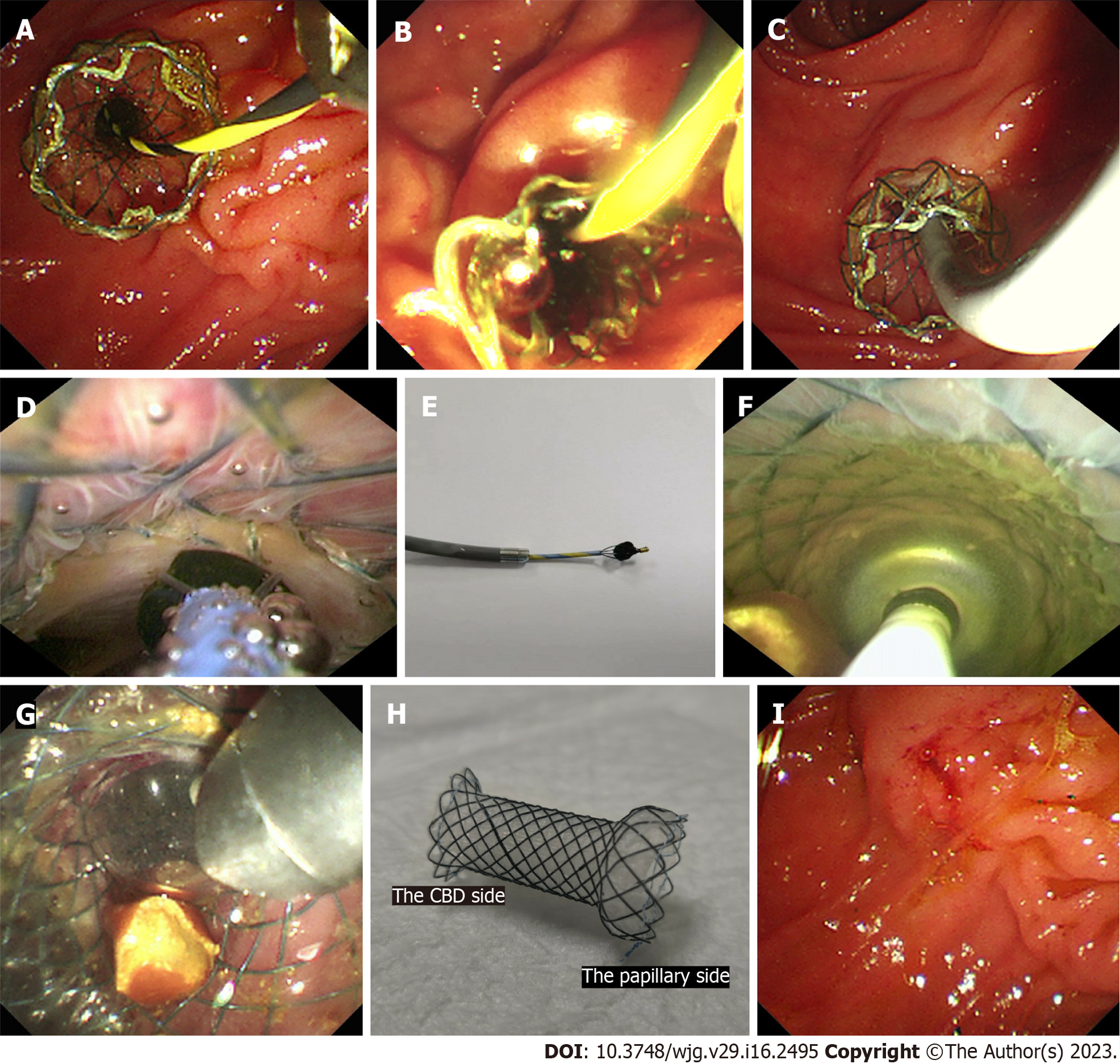Copyright
©The Author(s) 2023.
World J Gastroenterol. Apr 28, 2023; 29(16): 2495-2501
Published online Apr 28, 2023. doi: 10.3748/wjg.v29.i16.2495
Published online Apr 28, 2023. doi: 10.3748/wjg.v29.i16.2495
Figure 1 The procedures of cholangioscopy-assisted extraction through novel papillary support for small-calibre and sediment-like common bile duct stones.
A: The novel papillary support was placed in the lower common bile duct (CBD) and papilla; B: Many sediment-like CBD stones flowed from the support under endoscopic aspiration; C: The cholangioscope (Micro-Tech, eyeMax) was inserted into the CBD; D: The single clumpy CBD stone was collected by the basket under cholangioscopy; E: The stone, collected by the basket, was extracted from the CBD and body along with the cholangioscope; F: Multiple clumpy CBD stones were held by the balloon under cholangioscopy; G: One stone, held by the balloon, was extracted from the CBD along with the cholangioscope; H: The novel single dumbbell-style papillary support was removed from the body; I: Papillary morphology immediately after the removal of papillary support.
Figure 2 The sketch map of cholangioscopy-assisted extraction through novel papillary support for small-calibre and sediment-like common bile duct stones.
A: The sketch map of cholangioscopy-assisted aspiration extraction through the support for small-calibre or sediment-like common bile duct (CBD) stones; B: The sketch map of cholangioscopy-assisted basket extraction through the support for small-calibre CBD stones; C: The sketch map of cholangioscopy-assisted balloon extraction through the support for multiple small-calibre CBD stones.
- Citation: Zhang WG, Chai NL, Zhang B, Li X, Wang JF, Dong H, Feng YJ, Linghu EQ. Cholangioscopy-assisted extraction through novel papillary support for small-calibre and sediment-like common bile duct stones. World J Gastroenterol 2023; 29(16): 2495-2501
- URL: https://www.wjgnet.com/1007-9327/full/v29/i16/2495.htm
- DOI: https://dx.doi.org/10.3748/wjg.v29.i16.2495










